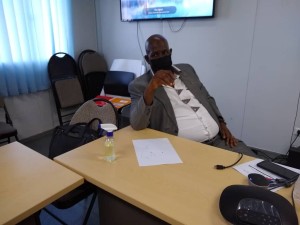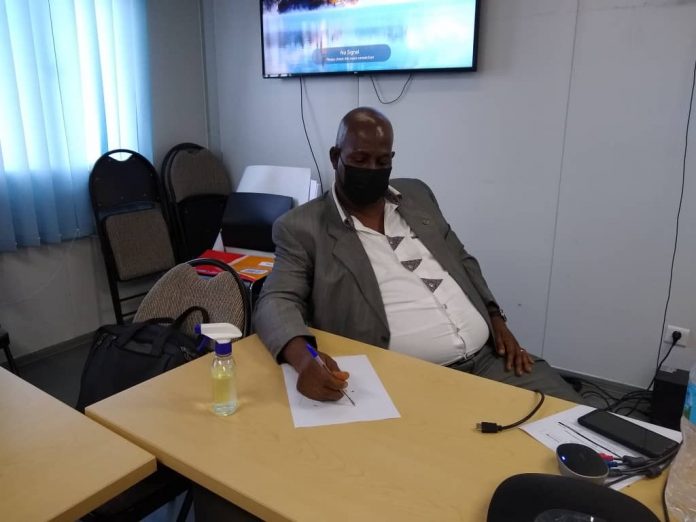By Foday Moriba Conteh
In a bid to capacitate media practitioners with knowledge to support awareness raising /sensitization before, during and even after the Polio Vaccination Campaign, the Ministry of Health and Sanitation, Health Education Division has on Monday 10th May, 2021 held a one day orientation for journalists on Polio Vaccination Campaign. The orientation took place at the Emergency Operational Centre, Cockerill, on Wilkinson Road in Freetown.
Risk Communication Pillar Lead at NaCOVERC, Harold Thomas, revealed that the one day orientation for journalists is geared towards supporting rumor management and media monitoring thereby identifying rumors, misconceptions and respond to rumors which they think can be handled, adding that the training will also capacitate media practitioners with knowledge to support awareness raising /sensitization before, during and even after the campaign.
He noted that Polio can cause weakness or paralysis in the arms and legs (Die Foot and Die Hand) and it can also lead to death and that there is no cure for polio but it can be prevented only by polio marklate and that the Polio marklate is free, safe and effective and Polio marklate helps make children grow strong and healthy.
Harold Thomas revealed that there is an outbreak of polio in the country, which threatens the health and lives of young children under 5 years of age saying they are at the greatest risk of Polio infection and in that regard the Ministry of Health and Sanitation vaccination teams will visit all houses to vaccinate children under 5 years against polio in two rounds (Round 1: 15-18 May & Round 2: 11-14 June 2021), adding that all children 0-5 years of age should receive polio marklate in each round of campaigns and at the nearest health facility during routine visits between 15-18 May and 11-14June 2021 furthering that it is important that children stay at home when vaccinators will visit their houses.
Risk Communication Pillar Lead informed journalists that any child below 15 years of age with sudden onset of weakness or floppiness of one or more limbs regardless of cause should be immediately reported to the nearby health facility pointing out that Polio vaccine is given at birth or soon after birth and subsequent doses are given at 6 weeks (drops), 10 weeks (drops), and 14 weeks (drops and injection) per the national immunization schedule.
He also informed all that sick and sleeping children should be vaccinated as polio vaccine is safe for them, stating that if a child is travelling, vaccination should be done immediately at the place of destination or during travel if vaccination is available. He added that doses given during the National Polio Vaccination are additional doses and do not replace routine and parents should continue with routine immunization after the campaign.
Harold Thomas urged journalists to use media channels and networks to better educate the public on the benefits, strategy and the risks of polio and to reach 95 % of caregivers with key messages on the campaign thereby ensuring compliance and up take of the Marklate.
Underscoring the role of journalists in promoting health and media ethics, Co-chair Media Sub-Group, RCSM Pillar at NaCOVERC, Ransford S.C Wright, said that the mass media has enormous potential to influence health-related behaviors and perceptions and newsrooms have wielded their power both responsibly and irresponsibly.
Ransford S.C Wright maintained that journalists have at times both built and undermined public trust, both serving as a constructive source of scientific facts and as a destructive source of rumors that tends to amplify panic, adding that given the potentially harmful effects of poor epidemic reporting, journalism, has a responsibility to contribute to enhanced public knowledge during times of pervasive fear.
In conclusion, he said responsibility for establishing and maintaining journalism’s good public image belongs to journalists who must not take lightly the power they wield during a public health crisis.
The Co-chair Media Sub-Group went on to say the mass media-print, television, radio and internet have an unparalleled reach as communication mechanisms.





